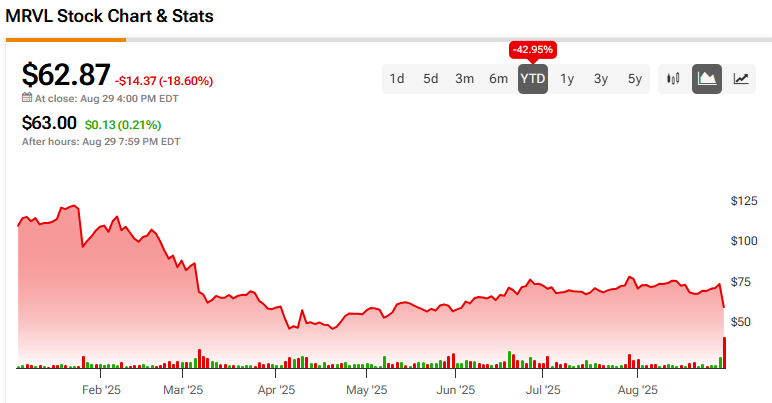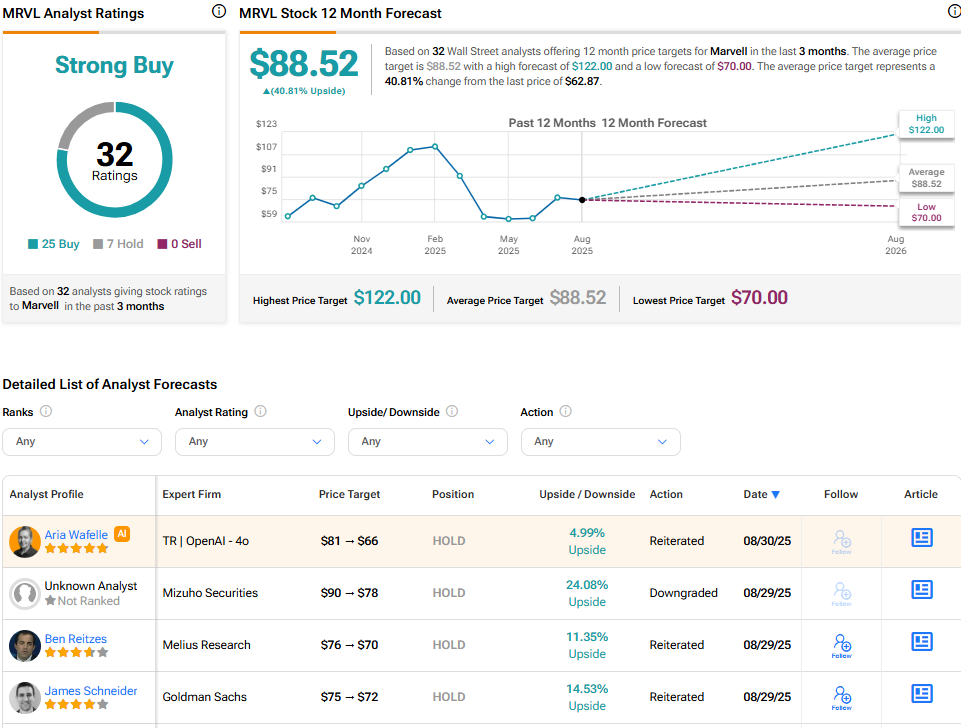Tools & Platforms
Taiwan Powers AI: The Hardware Realignment
Innovative technologies, including artificial intelligence, have ceased to be a niche technology, becoming the mainstay of modern economies. Hyperscalers and enterprise artificial intelligence solutions, as well as data centers, rely on superior servers and chips, along with some integration operations. The centerpiece of this shift is Taiwan, the country that has been a global leader in the creation of servers and AI hardware but that has remained under the radar. The strains of geopolitics and vulnerability of supply chain networks are pushing the best manufacturers of Taiwan to shift their operations. An ever-increasing number of these companies are establishing factories and assembly lines in Mexico and the United States to satisfy the demand, mitigate the threats, and reach the needs to change the trade policies. This change cannot simply be a tale of technology, but it is also a tale of international politics, tariffs, and the future of AI infrastructure.
Taiwan’s Role in AI Manufacturing
Taiwan dominates production of the AI servers with over 80% of the global servers and an even bigger market share of AI-ready servers. This management has a history of several decades of experience in the concept of contract manufacturing and well-established partnerships with U.S. technology companies. The AI revolution, however, is catching up to the pace of demand that even traditional supply chains cannot fulfill. Amazon, Microsoft, and Google are pushing their Taiwanese suppliers to manufacture hardware nearer North America. What is motivating them is exemplified by the idea that they need faster delivery times, want to avoid interference at the level of customs and other trade-related issues, and need to deflect exposure to the bouts of trade disputes with China. Taiwanese firms have emerged with a dual responsibility and advantage: to speed up the size and scope in new locations without sacrificing accuracy and consistency.
Strategic Shift
Foxconn, which has a long history of making iPhones, has reinvented itself with an AI structure. Server and cloud products revenue topped the smartphone segment in 2025, amounting to 41% of the sales compared to 35% by the cell phones (Reuters). This shift is indicative of a low increase in the smartphone sector and a high demand in AI. Foxconn, which it has recently established on a massive scale in Guadalajara, Mexico, includes what it calls the largest facility anywhere to bundle Nvidia superchip Blackwell. Simultaneously, it is also adopting a dual-track approach, which entails launching the twin production lines in the United States. The strategy is a protection against tariff risk with the flexibility to be able to provide faster and stronger delivery to hyperscaler clients. This change does not mark a short-term adjustment but rather represents a long-term reprocessing of global electronics manufacturing agendas.
Quanta and Pegatron Follow Suit
Foxconn is not the only one to take such a step towards realigning. One of the largest server makers in the world, Quanta Computer has invested one billion dollars in Nuevo León with the aim of creatingadditional capacity in AI server manufacturing. The geographical location of the region in proximity to Texas and the developed industrial infrastructure is also attractive in the scaled operations base. Pegatron, in its turn, said that the mass production of AI servers in Mexico will start in the third quarter of 2025. The company also has plans for larger complimentary facilities in the United States of America to fulfill much more stringent trade and regulatory needs. Both companies are moving toward hyperscaler customers that need quick installations of Blackwell-type systems. In a combination of these moves, the Taiwanese response makes it clear that a new era of hardware production has been realized, which focuses on diversification and resiliency in regions.
Wistron Expands in the U.S.
Foxconn, Quanta, and Pegatron remain focused on Mexico, but Wistron is moving directly to the United States. The company has planned an investment of 500 million dollars towards builds located in and around Dallas to assemble the new generation of AI servers developed by Nvidia. The facility is projected to open in 12 to 15 months, ready to assist the epic $500 billion AI server deployment by Nvidia across the nation. The ruling highlights the significance of geographical balance in the chain of supply, especially with the growing tariffs and regulatory demands. The direct manufacturing in the United States makes Wistron compliant and gives customers the confidence. Meanwhile, the company can also use local incentives and access to differentiated sources of talent in Texas at the same time. At the same time, its approach is in line with a newfound belief among businesses in Taiwan: diversification is not just recommended but a mandatory survival technique in the age of AI.
Financial Momentum and Rising Risks
These business decisions are supported by healthy financial reporting of the company. Giant manufacturing giant Foxconn experienced a rise in net profit of 27% in the second quarter of 2025, to US$1.48 billion, due to the demand of AI servers. In the third quarter, the AI-related revenue boom is projected to rise more than 170% compared to the previous quarter. Other companies are also experiencing tremendous growth, with Wistron recording a growth of 92.7% and Quanta a growth of 65.6% in the first seven months of 2025. These figures prove that AI is not a technological phenomenon but a structural change in the world economy. However, there are still dangers. There could be an increase in tariffs on imports into Mexico, Canada, and even other friendly economies. The need to deal with fluctuations in currency, lack of water, and fluctuations in the power grid in Mexico also presents an operational and maintenance challenge. The future looks bright, but it does not lack challenges.
Government Initiatives and Policy Pressure
It is also a concern of governments to develop new AI hardware geography. The Taiwanese leadership has embarked on a project of 10 major AI infrastructures it plans to develop as the economy aims to achieve an economic production of 510 billion by 2040 through the use of advanced research, robotics, and quantum technology. Citing concerns that shipments can be diverted to China, the U.S. government is getting tougher on export controls, going as far as installing GPS-like tracking devices in the AI chips themselves. Mexico, in turn, is also using quiet diplomacy to get tariff stays and Taiwan investment without infuriating China. These policy measures demonstrate how AI hardware has become a national security issue in addition to a business development concern. The relationship between corporate strategy and government policy will become the key to whether North America could be a stable and competitive hub in AI manufacturing.
Broader Implications for the IT Industry
These developments have a number of implications for IT professionals and businesses throughout the world. One is that procurement strategies have to consider changing sources of supply, with an increasing number of AI servers now being manufactured in Mexico or the U.S. Second, compliance and transparency are increasingly important issues because chips and servers are subject to increasingly strict compliance and tracking requirements under export controls. Third, integrating manufacturing has opened the possibility of new regional suppliers in power systems, cooling solutions, and logistics. Lastly, the geopolitical aspect cannot be disregarded further: the businesses that are highly dependent on Chinese manufacture are threatened to experience delays, tariffs, or outrageous restrictions out of the blue. The world IT community needs to embrace the flexibility, resilience, and proactive approach to supply chain risks.
Conclusion
Taiwan has been pivoting in North America, and this has been a huge movement in the current technological manufacturing. The moves started as a strategic adaptation to trade pressures but have now become an architectural overhaul in the AI hardware market. With Foxconn, Quanta, Pegatron, and Wistron bidding billions worth of investments in Mexico and the U.S., North America is fast turning into an important center of research and development pertaining to next-generation AI. This change will, however, be sensitive to political bargaining and infrastructure preparedness and global competition. The takeaway of this message to IT professionals, policymakers, and business leaders is simple: AI is redefining what software and data are and the fundamentals of global supply chains to boot.
Concurrently, numerous nations, particularly in the Global Southern region, run the risk of lagging because of poor infrastructure, resources, and talent, as well as regulatory deficiencies. Unless there is a strategic move, technological divides might widen. To eliminate this, countries ought to give preference to digital infrastructures, invest in training on AI, develop enabling policies, and pursue international cooperation. The inclusive nature of AI regulations can help them to grasp economic advantages by reducing the global inequalities.
Only time will tell whether this change in manufacturing is a lasting strength or unaffordable trial and error. The ability to respond to both opportunity and risk will ultimately determine how successful nations can be in the transformative AI era and how they can compete and become world leaders in technology.
Tools & Platforms
Point: AI Won’t Take Our Jobs Away

For an alternate viewpoint, see “Counterpoint: Trump’s Extreme Anti-Labor Policies Could Determine the Effect of AI on Workers.”
Read enough headlines about artificial intelligence and you can be excused for thinking that we’re headed for a dystopian future ruled by AI-powered robot overlords. Mass unemployment, including people being forced to train their robot replacements to get that last paycheck, seems to be a common theme in the latest dire forecasts.
Don’t panic. It is helpful to look to history because we’ve gone through these technology-will-destroy-jobs cycles before, and we can see familiar patterns.
Historically, new technologies have transformed the economy in disruptive but positive ways. While some jobs do go away, they tend to be the ones involving manual labor and drudgery. What’s more, new technology creates new opportunities, even whole new industries.
AI is a catch-all term. It generally refers to computer programs like ChatGPT that can seemingly think and create. These programs are complex tools that try to synthesize data from existing sources. AI doesn’t actually think; it imitates what is within its database, with current versions doing it at a higher level than was possible previously. AI can be a valuable tool to automate tedious, repetitive tasks.
Advances have led to fear that AI will do to more intellectual professions what earlier automation did to factory production: eliminate jobs. News outlets will employ AI programs instead of reporters. Films will have AI-generated actors, scripts and so on. Limiting the future use of AI was a significant issue in recent Hollywood strikes by the Writers Guild of America and SAG-AFTRA, the actors’ union.
Manufacturing is a good case study in how new technology transforms work. About 18 million people worked in manufacturing jobs in the United States in January 1980, according to the Labor Department. Since then, factories became heavily automated, and today the number of manufacturing jobs is 12.7 million. Despite this transition, the unemployment rate is 4.2 percent, two full points below the January 1980 rate of 6.5 percent, and the U.S. economy produces more than ever.
Over time, factory workers went from doing things like spray painting assembly line cars to supervising the machines that did the painting, which was safer and more productive; or they found jobs elsewhere that were made possible by automation. Meanwhile, cars became cheaper to buy.
The transition was hard for some people, but we came through it with more jobs overall.
That scenario likely holds for 21st-century AI. A World Economic Forum study found that AI and related technology will create 11 million jobs while displacing 9 million, for a net gain of 2 million. It will also open up new opportunities. Small-business owners who create those awkward homemade ads you see on TV will have new tools to develop fancier, more professional-looking awkward ads.
Another historical point to remember is that new technology rarely lives up to its early hype. AI is in a gold-rush stage, with corporations racing to invest in it based on extravagant promises about AI’s potential capabilities. New waves of technology often come with promises that they will be able to perform miracles, promises that should be viewed skeptically.
In the aughts, for example, we were told that embryonic stem cells would soon allow paraplegics to walk again. Some touted 3-D printing as readily giving everyone the replicator technology from “Star Trek,” rather than more Minecraft fridge ornaments. And so on.
Even transformative technology, like the internet, changes things in unexpected ways. Remember when the internet was supposed to make it easier to preserve and access reliable information, rather than drowning us in a sea of trivial and often unreliable data?
Since AI can only imitate rather than think, companies that rely exclusively on it instead of actual human minds do so at their own peril. The derisive term “slop” has already come to be associated with AI-generated art thanks to its habit of getting details like human anatomy wildly wrong. AI writing programs have also shown the curious habit of “hallucinating” research that does not exist. The FDA, for example, used an AI program to speed up drug approvals, but it sometimes relied on studies that didn’t exist. This failure forced the FDA to assign more staffers to vet the AI-produced studies and weed out the ones based on false data.
Yes, AI technology will continue to improve, but the sci-fi future of thinking machines is still a long way off. Until then, AI is just another tool, and tools will always need human minds and hands to operate them.
Tools & Platforms
Marvell Technology Stock Plunges 18.6% as Weak Outlook Overshadows AI Gains

Marvell Technology (MRVL) shares crashed 18.60% on Friday after the company issued a weaker-than-expected forecast for the third quarter. The sharp decline came despite second-quarter results showing strong growth in revenue, steady profits, and earnings in line with expectations. However, investors focused on the outlook rather than the recent gains, which led to a selloff in the stock.
Elevate Your Investing Strategy:
- Take advantage of TipRanks Premium at 50% off! Unlock powerful investing tools, advanced data, and expert analyst insights to help you invest with confidence.
On Thursday evening, Marvell Technology reported adjusted earnings of $0.67 per share, matching The Street’s estimates. Revenue reached $2.006 billion, slightly below the $2.01 billion consensus. Even with this small gap, total revenue rose 58% from the same quarter last year. The company’s data center unit led the surge, with sales up 69% to $1.49 billion, and it now accounts for nearly three-quarters of Marvell Technology’s overall business.
Weak Forecast Weighs on Analysts’ View
However, the company’s guidance for the third quarter shifted the market’s focus. Marvell Technology projected revenue of $2.06 billion, give or take 5%. That figure came in below the Street’s $2.11 billion target. Executives said data center sales will stay flat in the coming quarter before improving toward year’s end. In the meantime, analysts noted that investors have grown used to upbeat reports from companies tied to artificial intelligence, so the lower outlook stood out.
During the earnings call, Chief Executive Matt Murphy said demand for custom silicon and electro-optics products remains strong, with more than 50 new AI design projects underway. Yet he acknowledged that timing around new deployments will affect near-term results.
After the release, several banks adjusted their stance. Bank of America’s five-star analyst Vivek Arya cut his rating on Marvell Technology to Neutral from Buy and reduced its price target to $78 from $90. UBS’s top analyst Quinn Bolton reduced his target to $80 from $85, retaining a Buy rating. Morgan Stanley five-star analyst Joseph Moore also dropped his target to $76 from $80 and a Hold position. Many of these cuts reflected caution around the pace of major cloud projects, including Microsoft’s (MSFT) Maia accelerator and Amazon’s (AMZN) next-generation chips.
Stock Levels and Market View
Marvell Technology shares have now fallen more than 40% in 2025 and trade about 50% below their January high of $126.06. Despite the weak forecast, the company posted $461.6 million in operating cash flow and kept gross margins at 59.4%. Investors will look to the fourth quarter and beyond for signs that key AI partnerships with Amazon and Microsoft can deliver stronger growth.
Is Marvell Stock a Buy?
Despite the stock’s crash on Friday, Marvell Technology continues to boast a Strong Buy consensus among analysts. The average MRVL stock price target stands at $88.52, implying a 40.81% upside from the current price.

Tools & Platforms
Meta reportedly explores using rival AI models to enhance its apps

Meta is exploring the use of AI models from Google and OpenAI to enhance its apps while advancing its own Llama AI technology.
Meta is reportedly exploring the use of artificial intelligence models developed by competitors, including Google and OpenAI, to improve AI features across its platforms. According to a report by The Information, executives at the Meta Superintelligence Lab have considered integrating Google’s Gemini model into the company’s Meta AI chatbot. The move would enable Meta to offer a more robust, conversational text-based solution for answering user search queries.
The report also indicated that Meta has held discussions about incorporating OpenAI’s technology into Meta AI and its other AI-powered features. These potential collaborations highlight Meta’s effort to strengthen its AI capabilities while continuing to develop its own large language model, Llama.
Strategic partnerships as a temporary measure
A Meta spokesperson stated that the company is taking an “all-of-the-above approach to building the best AI products,” which includes both building in-house solutions and partnering with external organisations. The report noted that while Meta is exploring external technology, the company’s primary goal is to refine and advance its own AI systems. Leveraging competitor models would only be a temporary measure to accelerate innovation and keep pace with rivals in the rapidly evolving AI market.
Meta’s interest in adopting external AI tools comes at a time when competition in generative AI development is intensifying. By accessing technologies from industry leaders such as Google and OpenAI, Meta aims to enhance user experiences on its apps while gaining insights that can help strengthen future iterations of Llama.
Internal AI adoption and recruitment efforts
The Information reported that Meta employees are already using Anthropic’s AI models to support the company’s internal coding assistant. This indicates that Meta has been integrating third-party AI solutions internally even as it invests heavily in its own research and development.
Additionally, Meta has been actively recruiting AI researchers from Google and OpenAI to enhance expertise at its Superintelligence Lab. These recruitment efforts reportedly include highly competitive compensation packages designed to attract top talent from across the AI sector.
As Meta continues to refine its AI strategy, the company’s willingness to work with external partners shows its commitment to creating cutting-edge products. The temporary reliance on competitor models could help Meta accelerate development and maintain a strong position in the AI race.
-
Tools & Platforms3 weeks ago
Building Trust in Military AI Starts with Opening the Black Box – War on the Rocks
-

 Ethics & Policy1 month ago
Ethics & Policy1 month agoSDAIA Supports Saudi Arabia’s Leadership in Shaping Global AI Ethics, Policy, and Research – وكالة الأنباء السعودية
-

 Business2 days ago
Business2 days agoThe Guardian view on Trump and the Fed: independence is no substitute for accountability | Editorial
-

 Events & Conferences3 months ago
Events & Conferences3 months agoJourney to 1000 models: Scaling Instagram’s recommendation system
-

 Jobs & Careers2 months ago
Jobs & Careers2 months agoMumbai-based Perplexity Alternative Has 60k+ Users Without Funding
-

 Funding & Business2 months ago
Funding & Business2 months agoKayak and Expedia race to build AI travel agents that turn social posts into itineraries
-

 Education2 months ago
Education2 months agoVEX Robotics launches AI-powered classroom robotics system
-

 Podcasts & Talks2 months ago
Podcasts & Talks2 months agoHappy 4th of July! 🎆 Made with Veo 3 in Gemini
-

 Podcasts & Talks2 months ago
Podcasts & Talks2 months agoOpenAI 🤝 @teamganassi
-

 Mergers & Acquisitions2 months ago
Mergers & Acquisitions2 months agoDonald Trump suggests US government review subsidies to Elon Musk’s companies



















